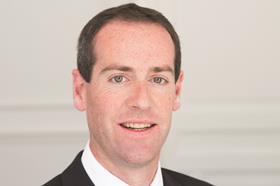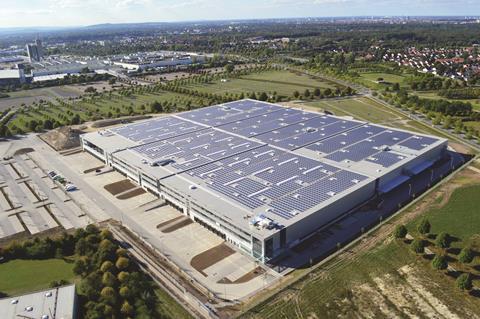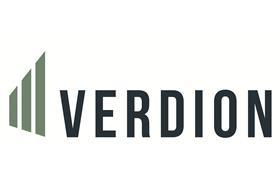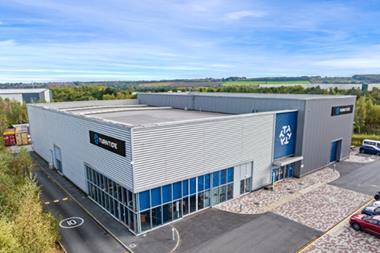Looking past the lustrous sheen of ever higher portfolio sale volumes and ever bigger big-box ecommerce developments, the keen observer of the logistics property sector will be focusing attention on the real market driver: the economy.

Are we now edging towards the end of a cycle? Or does the structural transformation in the sector mean we are protected from the usual ebbs and flows of economic change? What is for sure is that the sector has never experienced such a low-yield environment and those of us in investment and asset management need to respond.
Both in the big-box logistics market and the multi-let industrial sector, yields have been compressing at a rapid rate, with prime yields in both sitting at 4.5% in a number of the largest European markets. Continued investor appetite for the sector is driving yields lower and a severe demand-supply imbalance and competition from alternative uses have pushed rents up at an unprecedented rate.
This is true in the UK and across continental Europe with the upshot that investors have had to make hard appraisals about whether value can be found.
Fundamental to this issue is the question of how, rather than where, to maximise returns and ensure performance in a market that we believe is showing characteristics of being late in the cycle.
At Verdion, we know European warehousing and logistics inside out after years of developing and investing across the northern and central regions especially. We have built up a deep knowledge of how it operates, its different submarkets and how a sophisticated understanding of its many drivers can provide attractive returns.
Our €1bn (£881.9m) European portfolio is roughly split 50% to Germany, 35% the UK and 15% across the Nordics. We see further opportunities in these markets – as well as in central and eastern Europe – and we are growing our portfolio and increasing assets under management with this in mind.
The potential for big returns is, admittedly, scarcer than five years ago but they do exist.

For us, above all else, openings can be found through strong relationships with occupiers. Truly understanding each business and what drives its ever-evolving requirements is the key to adding value.
Having built up relationships with a number of major household names, for which we have either let existing assets or delivered new purpose-built facilities, we talk to them on a daily basis. Every business is different and this needs to be reflected in all aspects of their real estate strategies.
From there, we focus on having the market and technical expertise to identify solutions and the asset management skills to implement them.
It’s clear that what occupiers look for in buildings is very different from a few years ago. Most significantly the amount of technology that is needed as a standard requirement has increased enormously, now influencing every element of building design, not just floor flatness.
We recently delivered a building in Denmark for a pharmaceutical company to store huge amounts of insulin in temperature-controlled environments that could never deviate from the required levels, to avoid damage to millions of kroners’ worth of medicine and the consequential impact on their business.
With this at stake, the technical specification and design requirements were very detailed. Being able to understand not only what was required but how to deliver it quickly without error has been a significant advantage.
But the speed at which new technology is being adapted means that older buildings often can’t keep up. Far from being a problem, this is where we see the most advantage. In many cases, the buildings we consider from an investment and asset management point of view no longer suit occupiers because the existing configuration can often become a hindrance to overall operations.
This means the chance not only to build a brand new facility, but to repurpose and upgrade existing buildings. With a clear understanding of occupier requirements both in terms of location and building design, we can acquire the building and upgrade it to new specifications and make it more efficient.
Consolidation opportunities
At a more ambitious level we are looking at sites where occupiers can consolidate from two or three locations into a more efficient, centralised facility with the opportunity to release value from land and space no longer needed – especially in growth locations that have limited supply.
In some parts of Europe where occupier ownership is more common, businesses might not necessarily want to invest their capital or have the expertise to upgrade their operations and building technology. The ability to create a sale-and-leaseback opportunity offers the chance to unlock capital at the same time as taking advantage of occupational improvements. With occupiers increasingly under pressure to improve the efficiency of their operations this approach has become increasingly popular.
Planning permissions and building permits are an essential part of the equation, too. With speed to market driving returns, developing in existing zoned areas is clearly helpful. Local contacts and knowledge about new zoning – or other precedents that will allow development in an established area – will open up otherwise overlooked sites and opportunities.
Above all else, openings can be found through strong relationships with occupiers. Understanding each business and what drives its ever-evolving requirements is the key to adding value
At this point in the cycle it is important to pay particular attention to obsolescence set against tenant requirements. If building insulation is poor and needs to be upgraded, for example, you have to be able to underwrite and price it effectively as well as having the technical skills to be able to deliver it.
Sustainability, too, needs to be factored in. Occupiers are more demanding in terms of a building’s energy use and there is an increasing appetite for offsetting expense as well as fulfilling corporate sustainability and CSR targets.
Future-proofing requirements always form part of discussions of occupiers’ requirements – the ability to build that in to current proposals is valued highly.
We try and look further than that, however. A better opportunity exists in understanding where occupiers are likely to be over the next few years and how they will serve their markets. Even a location that may have been considered secondary in the past could now be exactly right. Increased urbanisation is having an impact on rents, so less central locations with good transport connections are coming into their own, especially if they can serve different markets from one building.
One example of this is an asset we recently acquired in mainland Europe where the tenant is consolidating from three separate city centre buildings into one new location. It will serve as its headquarters for that market and is located about 20 minutes from the city centre, somewhere it may not have considered previously.
In reality, a combination of a number of considerations usually comes together to ensure performance. Strong relationships with occupiers, understanding their business and requirements, and having the technical skills and expertise to deliver on their needs will offer the returns that many people will be chasing as the market moves on.
Simon Walter, head of asset management at Verdion

About Verdion
Verdion is a real estate investor, developer and asset manager specialising in the industrial and logistics sector and operating across Europe. It develops high-specification facilities for major retail, manufacturing and third-party logistics clients, it acquires strategic development land and it buys income-producing assets with potential for added value. Since 2013 it has created a €1bn (£881.9m) pan-European investment portfolio that is focused on leveraging technical innovation and development expertise to increase investment returns. Founded in 2010 by Michael Hughes, Verdion has offices in London, Düsseldorf, Frankfurt and Malmö. www.verdion.com
PW Perspectives Supplement Winter 2018
- 1
- 2
- 3
- 4
- 5
- 6
- 7
- 8
- 9
 Currently reading
Currently readingOccupier knowledge is key to unlock logistics value
- 10
- 11
- 12
- 13
- 14










































No comments yet